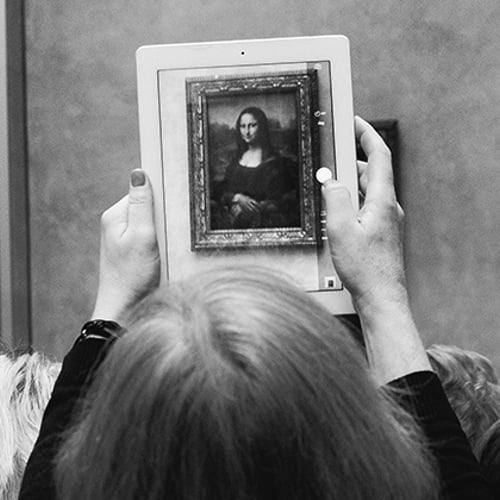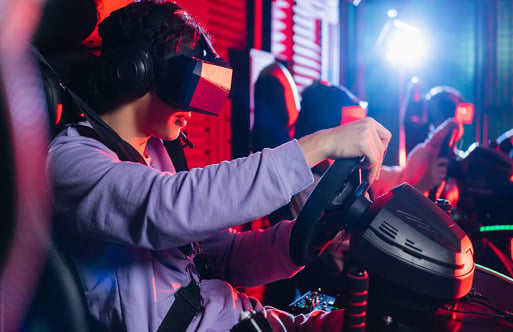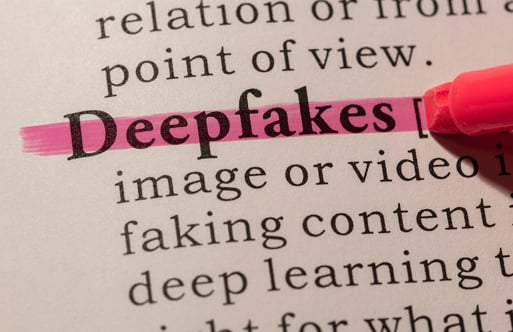NFTs (Non-fungible tokens) have been thrust into the spotlight as companies, people and artists seek to monetise creations, from artworks to tweets. Philippe Gellman, co-founder and CEO of Arteïa, talks to Johanna Hamilton about his creation of ‘the first Digital Catalogue Raisonné supported by blockchain’ and how cutting-edge tech is changing the art world.
Arteïa was created in 2016 to document art works, hold proof of provenance as well as a tool for collectors to enjoy real time valuations of their collections. While the digital artwork expands and NFTs are changing what a collectible is, Arteïa has also changed to allow art collectors to keep their collections - be it fashion collectibles, cars or digital art - in one central online repository.
The security of blockchain transactions is particularly attractive in an industry where provenance is the only defence against forgery. Philippe Gellman co-founder and CEO of Arteïa explains how the idea for the digital catalogue raisonné evolved...
‘I have spent 30 years collecting art and to be honest, around 12 years ago, I had an issue. I was very proud to have found some unidentified artworks in a flea market. I went straight to the institute dedicated to this artist to verify them, because if they recognise the works and they include them in the catalogue raisonné - then the price of the art piece explodes.
'So, I went to the Institute, gave them my 10 drawings and 500 euros per piece for an evaluation - regardless of the result. Four to six months later, they told me, “they’re not drawings, they are lithographic prints”. So, I then went to see a specialist in the world of art on paper. He said, “this is no lithography, this is paper, ink, pencil with absolutely no mechanical process involved”.
‘I went back with the report to the institute and they said, “we are going to keep the art pieces again for five or six months to reassess – but if you want, maybe we can buy them at this price...”. If I’d sold them, they might well be included in the catalogue raisonné - and in 5-10 years they might have been worth maybe 10 times or 50 times the price. This is sometimes unfortunately how the art market behaves. But with blockchain, all this is finished. It's finished.’
So, will it be ledger technology that changes the art world?
Will it be blockchain that is authenticating the art of the future, with a little help from machine learning? Gellman continues: ‘My idea is to give back the power to the artist. To give them back the management of their collection. Of course, it's better with living artists but it can also work with estates. So, when we decide to offer this technical solution to record the provenance of an art piece in the blockchain it makes it official.
It doesn't solve all the problems but it can make sure you’re buying the original and not a fake. It adds a timestamp of when the information has been put in the blockchain for eternity making every transaction traceable and transparent. You can, of course, include any kind of changes. You can add literature, biography, events like exhibitions so you can have all the history of the art piece that is transparent for everyone.’
The idea of technology and art working together isn’t new. BCS has had a Computer Arts Society, that celebrated 50 years in 2019. In the same year, Christies sold an AI generated portrait of Edmond Belamy for a whopping $432,500 - nearly 45x the initial sales estimate. The signature, rather than a name or a flourishing stroke of initials, was an equation, or more accurately a depiction of an AI algorhithm.
Three years later, at Christie’s first NFT sale, Mike Winkelmann, known as Beeple, sold his digital collage, ‘Everydays: The First 5000 Days’, for a staggering $69m. Before the advent of NFT auctions, the most Winkelmann had ever made from a print, was $100.
Is this a new bubble just waiting to burst?
So, is this a move to democratise art and make the creators rich before they’re pushing up the daisies? Is this a bona fide investment opportunity to buy a ‘one off’ with unassailable proof of authenticity? Or is this a crypto-bubble that’s just waiting to monumentally burst?
Back in October 2020, in another lucrative auction, Beeple sold a pair of NFTs for $66,666.66 each. Last month one of those NFTs was resold for $6.6m.
Explaining the drive to buy ‘tokens’ rather than physical artworks, Noah Davis, a specialist in post-war and contemporary art said: ‘Acquiring Beeple's work is a unique opportunity to own an entry in the blockchain itself created by one of the world's leading digital artists.’
There is also a move to replace physical collectibles, such as football cards with NFTs. Once again, this is a way for artists to profit from their artworks as blockchain technology would allow a percentage of every sale and subsequent resale to be passed onto the originator of the work. No more penniless artists and rich collectors...
What is an artist?
Is it only an “artist” who makes it onto Arteïa - and if it is, how is the term “artist” defined? Should we be thinking less in terms of “artist”, and more in terms of “creator” given the rise in NFT collectibles?
Gellman clarifies: ‘Our job is not to decide what is an artist, but what has value as demonstrated through a range of objective criteria. First is auctions. Has the artist made it to auction? Is there an average value for their art pieces? If you have zero recognition from the auction market, or say young artists that only sell on Instagram, then it’s difficult to validate that artist. I think NFTs have grown out of a necessity for artwork to go digital during the pandemic.
‘It’s not for us to decide whether questionable art from unknown artists is worth $69m - what we do is provide a secure system for the art market, for the collectors, for the institutions, for the artists.
‘What is new with NFT is to buy digital art with what we call non-fungible tokens which make the digital art piece unique. Jack Dorsey, Twitter founder, sold his first tweet on NFT for $2.9m. For now, this market is really driven by speculation, by money inflows regarding all the capital gains in crypto and the bitcoin at record highs.’
So, while it is the new gold rush - the wild west of speculation that is keeping the NFT market buoyant - what of traditional artists? The painters, printers, sculptors who are all creating non-digital artworks? Have they missed the boat? Indeed, is there a boat for them to climb aboard?
Gellman continues: ‘I find it very interesting that important actors and historic actors of the art markets are progressively entering this market. Some artists will design art pieces specifically for this market. I don't want to betray any secrets, but we are working with big art galleries in order to provide a much more secure way of providing NFTs to the art market. Our platform allows you to link physical art pieces with an NFT for people that want to invest in digital art.’
So, give an example of how the Arteïa platform could help a would-be buyer?
‘Say you want to buy a photograph, if it's one of 500 it will be less expensive that if it's a proof of one of ten. How do you prove that there's not 5,000 photographs in the market and you are buying a multiple? So now with blockchain, and also with the catalogue digital signature, we will apply on art pieces with NFTs you simply use a smartphone to verify that this photo is number two of 10. So, it's much more secure for the artist, for the collector and for any institution that exhibits the art piece. Technology is bringing a lot more security to the art world.’
For you
Be part of something bigger, join BCS, The Chartered Institute for IT.
An online platform lends itself not only to security, but also access of information and competitive pricing. Arteïa is monetised through its As-A-Service model. Collectors and artists can subscribe to the service from as little as 9.5 euros a month, with a sliding scale depending on the institution, number of artworks and the number of users. The low cost and ease of use makes Arteïa a very appealing proposition to both artists and collectors alike.
‘We have an onboarding service that helps both the collector and artist to digitalise their collection. Sometimes we have art collectors with 60 or 70 pieces and they have documentation on paper, in envelopes or in big files - and they don’t always have high-definition pictures of their art pieces. So, we can send a specialised photographer to digitise everything. If they have partial records on other platforms, we have the migration tools to transfer everything across. We make it as easy as possible to record every piece of data.
‘We provide a full dashboard in real time for every collection. Financial dashboard, capital gains, historical acquisitions, resale, insurance, inventory and of course and storage issues. So really a full view of an art collection in real time centralising all the elements linked to an art piece making it easy to share when you sell, when you want to ship, or when you want to exhibit in the museum.’
‘During this process, we are using AI/ machine learning to create a Shazam of art. You take a picture and our catalogue can offer information about the artist, artists from the same period - and auction sales values and other pieces in the same category.’
How will Arteïa change the art world?
While blockchain offers a decentralised ledger that can be used across the industry, it also takes the stranglehold away from specific institutions, allowing more of an open market. Gellman sees this transition as an opportunity, much like how gaps in a decentralised market have been filled by Uber and Deliveroo.
‘In the next 10 years, a lot of businesses will be completely disrupted, or facilitated by this decentralisation. Buying an artwork at a physical auction you will pay around 30% commission. At an art gallery, the commission would be nearer 50%. With a digital platform, collectors can be put in direct contact with artists with no ‘middleman’, ergo no commission.’
Great for buyers - not so good for traditional sales outlets. So, what’s to stop this evolution of the auction houses, where they create and monetise their own catalogue raisonné? What’s to stop a whole host of other online galleries and catalogues, all purporting to be the ultimate repository for digital artworks, all using the blockchain… what’s to stop them claiming they’re the number 1? The Microsoft? The Google? Is Arteïa just another brand in the market, or can it truly claim dominion?
‘We were first to the market and we created the Art Identification Standard, which all subsequent businesses entering the art market ecosystem needs to adhere to. Put simply, it allows those cataloguing the work to create one piece of digital information with a unique ID for every art piece. We already have around 40 start-ups that have joined the AIS initiative and some of the bigger institutions are interested in how Arteïa will bring about improvement to the industry.
‘We are not claiming to be experts. We don’t authenticate anything, that’s not our job. We provide the tools in order to put the official information in the blockchain through our technology.’
About Arteïa
Philippe Gellman co-founded Arteïa in 2016 in Brussels. Created by art collectors for art collectors, Arteïa is a creative and visionary company, providing digital solutions to professionals in the art world: collectors, art dealers, artists, dealers, galleries and fairs.
Arteïa, whose first product, Arteïa Collect, was launched in October 2018, was born out of the desire to bring more transparency and security to the art world. Arteïa Collect is a hypersecure, sophisticated and intuitive cataloguing solution that facilitates the identification, viewing, logistics, financial optimisation and sharing of collections, while guaranteeing total confidentiality for the collector.
The project is led by a mix of experts from the worlds of art, business and technology. Its founders, Philippe Gellman (CEO), Marek Zabicki (CTO), Hugues and Reine-Marie Taittinger and Olivier Marian (CSO) are entrepreneurs and experienced collectors.
Today, on the strength of its expertise, Arteïa has gone from an eponymous solution (a platform for cataloguing works of art) to a multifaceted service provider, using its cutting-edge technology to meet the needs of the art market.

















